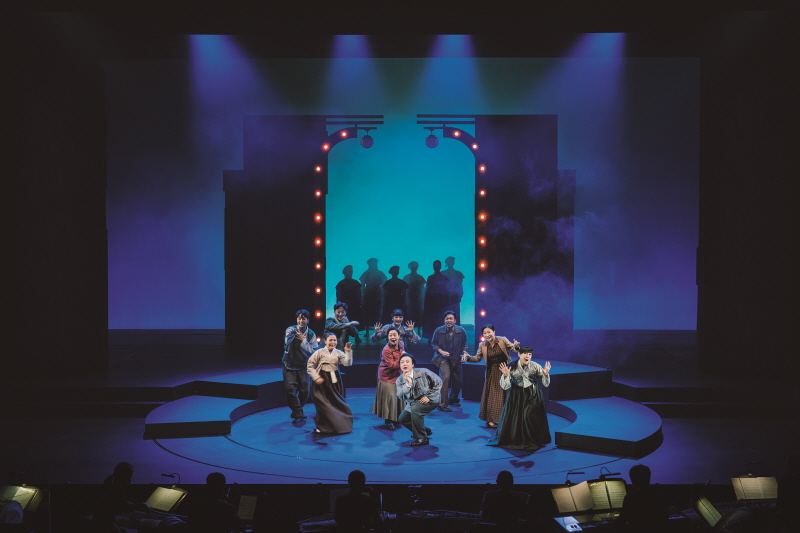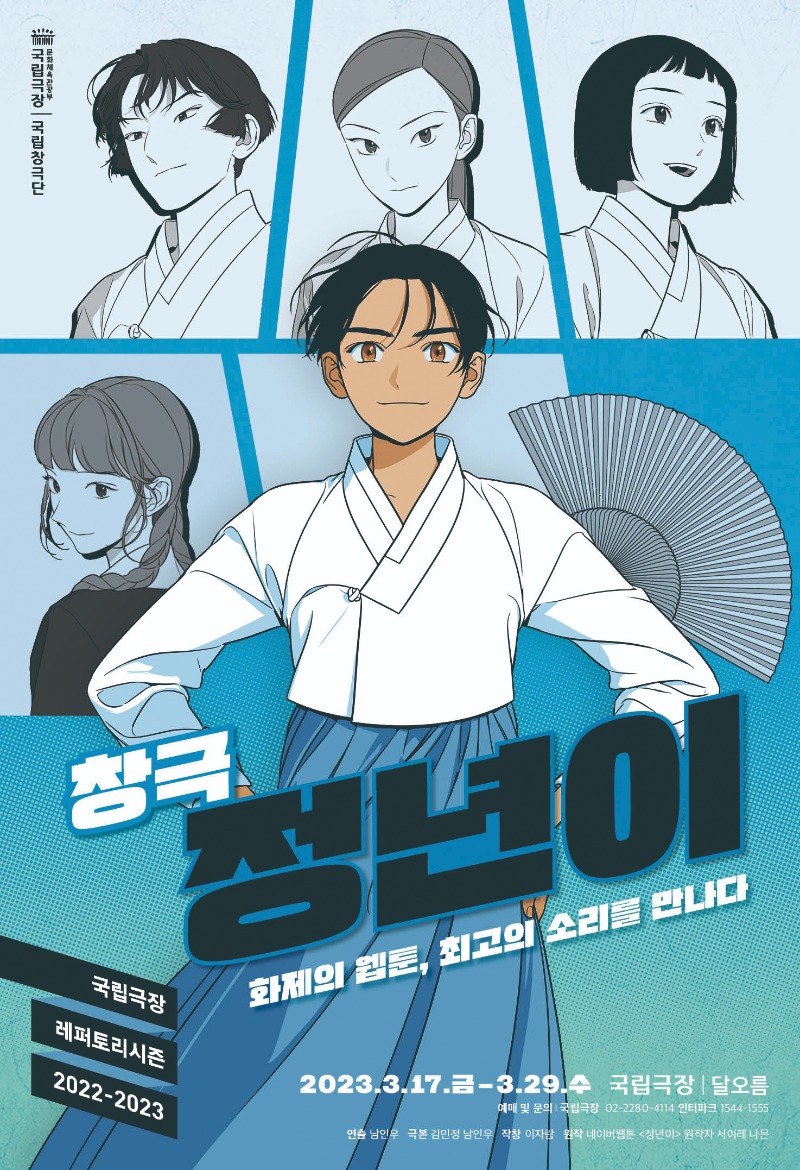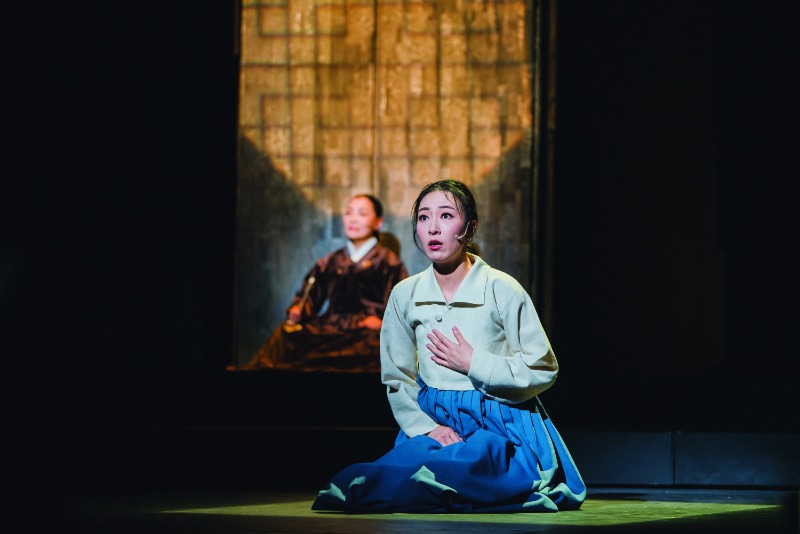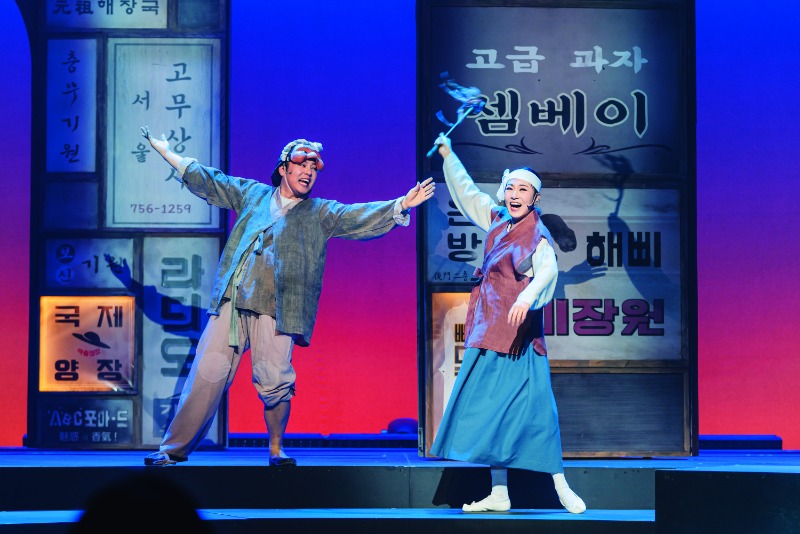The National Changgeuk Company of Korea used a highly popular Korean webtoon as the blueprint for its first production of 2023. The decision filled the seats for traditional musical storytelling through a genre of female music that overcame male dominance but was subsequently suppressed by it.

The webtoon “Jeong-nyeon” became the platform for this year’s comeback of gukgeuk, an all-female niche in pansori, the traditional music story telling genre. Gukgeuk had a meteoric rise and sudden demise decades ago.
ⓒ National Theater of Korea
The revival of gukgeuk, a genre of female musical storytelling that challenged overbearing male peers, grabbed public attention this past spring. If the sellout performances are a harbinger of its future, it will finally find a permanent niche decades after it was denigrated and forced off stage.
“Jeong-nyeon” was inspired by the highly popular webtoon of the same title, and the National Changgeuk Company of Korea provided the musical scores. Changgeuk is a form of traditional Korean musical drama, often compared to opera. It is based on pansori, or traditional narrative song, but involves several singers with defined roles rather than a lone singer playing multiple roles.
In 1948, approximately 30 of the best singers of the time, including Park Nok-ju and Kim So-hee, formed a women’s traditional music club and established gukgeuk, a branch of changgeuk. It was their attempt to raise their voices outside the male-dominated traditional music circle andtheir own stage. The resulting female gukgeuk enjoyed huge popularity, starting with the founding performance “Okjunghwa.”
The all-female performances were far more diverse than changgeuk. The music was more popular and the singers, dressed as men, were idolized. Obsessed admirers sent them presents and letters written in their own blood. Especially smitten devotees proposed marriage, and some unhinged fans even attempted kidnappings.
The commercial success of the women’s shows and public adulation of the performers ruffled the traditional music mainstream. Female gukgeuk was branded a vulgar imitation. It faded away in the 1960s, as movies and TV shows steadily gained greater attention, and as if to add further insult, female gukgeuk was excluded from the national system designed to protect and pass on traditional arts and culture.
Groundbreaker

Written by Suh Ireh and illustrated by Namon, “Jeong-nyeon” appeared on the NAVER WEBTOON platform from April 2019 to May 2022. It ushered in a reawakening of female narrative singing.
ⓒ National Theater of Korea
Tickets to “Jeong-nyeon” were sold out two months before the opening. Three more performances were added, and they were quick sellouts too.
The original webtoon was written by Suh Ireh and illustrated by Namon. In 2019, less than a year after its release, it won the “Our Manhwa of Today” award, hosted by the Ministry of Culture, Sports and Tourism, and the following year, the “Gender Equality Cultural Contents Award of the Year.”
“Jeong-nyeon” pays homage to female gukgeuk as the embodiment of the arduous life of women who survived the turmoil of Korea’s modern history and achieved success in a patriarchal society. It follows the brilliant journey in which female artists, who were always pushed aside by men, struggled to find their voice, name, and rightful place in society. The webtoon’s episodes take place in the 1950s, the heyday of female gukgeuk. The storyline describes the growth of a girl struggling to become the best female gukgeuk performer.
Until now, Korean webtoons have been adapted for movies and TV series but never for changgeuk. The groundbreaking production of the National Changgeuk Company reflects continued interest in experimenting with various modes of entertainment. Previously, it adapted a Greek tragedy and a Chinese opera into changgeuk.
Play Within a Play
The fast-paced, two-hour changgeuk version of “Jeong-nyeon” had to compress and deliver the gist of many episodes. The main character, Jeongnyeoni, the daughter of a reclusive master singer, moves to Seoul and joins Korea’s largest gukgeuk troupe, Maeran. The series of events that take place while she meets the different characters are marked by love, friendship, courage, and resoluteness.

Heroine Yoon Jeongnyeon passionately informs the best pansori master about her dream of becoming a successful gukgeuk perfomer.
ⓒ National Theater of Korea
This work markedly differs from most heroic stories, which immortalize only one winner. The characters do not step on their competitors to get ahead and do not speak ill of anyone in order to be No. 1. They are hard on themselves, to test their limits, and do everything in their power to protect women’s gukgeuk and forge ahead. They trust and depend on each other to do so.

“Jeong-nyeon” is a play-within-a-play. The storyline incorporates popular gukgeuk productions of the 1950s, such as “Chunhyangjeon” and “Jamyeonggo.” Here, heroine Yoon Jeongnyeon performs in “Chunhyangjeon,” the first role that she has landed.
ⓒ National Theater of Korea
Another highlight of the changgeuk “Jeong-nyeon” was the play-within-a-play format. Parts of “Chunhyangjeon” and “Jamyeonggo,” female gukgeuk performances that were very popular during the 1950s, were inserted into the production. In this way, the work revives scenes that disappeared decades ago and at the same time invites the audience to join the singers in reliving theater history. The National Changgeuk Company’s cast mesmerized the audience with their superb acting and singing.
Emotional Compositions
Music is just as important as the storyline in changgeuk and women’s gukgeuk. Pansori singersnew music based on the rhythms and scales of traditional Korean music that they have learned over a long period of time. This is called jakchang, which literally means “creating song.” Today, all new stories encountered through pansori require composition, and its depth determines the level of the work.
Jakchang is the work of exploring the long history of pansori, dismantling it, and transforming it. It means discovering the stories of our time and giving them a voice. By bravely traversing the profound legacy of pansori, music director Lee Ja-ram’s colorful compositions dramatically conveyed the content of the lyrics and allowed the audience to fully enjoy the nuances of the words.
In her compositions for “Jeong-nyeon,” Lee, a popular singer and performing artist herself, seemingly wanted to transform pansori into a contemporary genre without confining it to the traditional framework. Nam In-woo, a longtime collaborator with Lee, directed the National Changgeuk Company cast.
Though gukgeuk ceased to exist in an organized form, in the 2000s, female artists influenced by feminism and cultural movements began to stage it again. The comeback of this intense form of female musical storytelling, thanks to a popular webtoon, held the power to prod memories of older-generation ticket holders and buttress the can-do spirit of the young generation.
Seong Hye-inMusic Critic